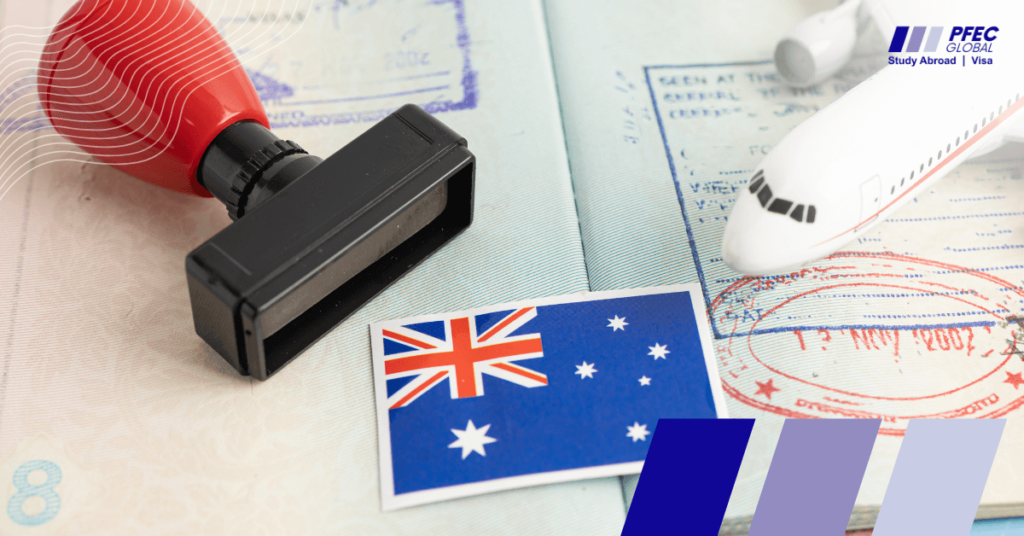How to Increase Your Chances of Getting Australian PR
- PFEC global
- 8 min Read
Australia offers multiple skilled visa pathways for permanent residency (PR), but success depends on scoring well in its points-based system. Age, English test scores (IELTS/PTE), work experience, and education all contribute to your total. Popular PR options include Subclass 189, 190, 491, and employer-sponsored routes. Boost your points by improving English scores, completing a Professional Year, gaining local experience, or studying in regional areas. Avoid common mistakes like mismatched ANZSCO codes or outdated EOIs. PFEC Global offers expert guidance on visas, state nominations, documentation, and personalised PR strategies. Plan early to secure your future in Australia.

How to Increase Your Chances of Getting Australian PR
You might be studying in Australia or already working here, wondering how to make it your long-term home. You hear about permanent residency from classmates or colleagues, but the process feels complex. With so many visa types, requirements, and changing rules, it’s easy to feel stuck or unsure where to begin. The truth is, getting Australian PR is possible — but it takes the right strategy.
Once you understand how the points system works and how to improve your score, things start to fall into place. If you’re ready to take control of your future in Australia, this guide will help you get there with clarity and confidence.
Understanding the Australian PR Points System
Australia uses a points-based system to evaluate skilled migration applicants. To apply for a skilled visa, you need to submit an Expression of Interest (EOI) through the SkillSelect platform. Your profile is then ranked based on your total points.
Key PR Points Criteria
| Criteria | Maximum Points |
|---|---|
| Age (25–32 years) | 30 |
| English proficiency (IELTS 8+) | 20 |
| Skilled work experience (Australia) | 20 |
| Overseas work experience | Up to 15 |
| Recognised qualification | 20 |
| Australian study (min 2 years) | 5 |
| Regional study | 5 |
| Partner skills (if applicable) | Up to 10 |
| State nomination (190/491) | 5–15 |
| Completion of a Professional Year Program | 5 |
What to Know
- You need at least 65 points to be eligible for most skilled visas.
- The higher your points, the better your chances of receiving an invitation to apply.
- Points are awarded only if supported by valid documents and test results.
Expert Tip:
Boosting your IELTS score from 7 to 8 or gaining one more year of local work can increase your total significantly. Even small changes can move you ahead of others in the queue.
Top PR Pathways Available in Australia
To increase your chances of getting Australian PR, you need to choose the right visa pathway. Most skilled migrants apply through the General Skilled Migration (GSM) program or employer sponsorship routes.
1. Subclass 189 – Skilled Independent Visa
Does not require state or employer nomination.
Suitable for applicants with high points and occupations on the Medium to Long Term Strategic Skills List (MLTSSL).
Offers direct PR with full work rights across Australia.
2. Subclass 190 – Skilled Nominated Visa
Requires nomination from a specific Australian state or territory.
Adds 5 bonus PR points to your score.
You must live and work in the nominating state for a minimum period.
3. Subclass 491 – Skilled Work Regional Visa
A temporary visa valid for 5 years.
Requires nomination by a state or eligible family member in a regional area.
Grants 15 bonus points and offers a PR pathway via Subclass 191 after 3 years of regional work.
4. Employer Sponsored Visas (Subclasses 186 and 482)
Available for skilled workers with a job offer from an approved Australian employer.
Subclass 186 offers a direct path to PR.
Subclass 482 is a temporary visa that can transition to PR after gaining work experience.
Expert Tip:
Always check which skilled occupation list applies to your chosen visa. Lists vary between visa types, and eligibility depends on matching the correct one.
9 Smart Ways to Boost Your PR Points in 2025
If you’re aiming for Australian PR, small changes can make a big difference. Here are nine proven ways to improve your points and increase your chances of getting an invitation.
1. Score 8 or Above in IELTS or PTE
Earn 20 PR points with a top score
Boost your chances in competitive occupation rounds
Next step: Take mock tests and get coaching if you are close to the next band.
2. Complete a Professional Year Program
Adds 5 points for graduates in IT, Accounting, or Engineering
Improves job readiness and local experience
Next step: Enrol in a recognised program within 12 months of graduation.
3. Study in a Regional Area
Gives you 5 bonus points
Offers better PR chances with lower competition
Next step: Choose a CRICOS-registered course in an eligible regional postcode.
4. Get a State or Territory Nomination
Adds 5 to 15 points depending on visa type (190 or 491)
Helps you qualify even if you have lower independent points
Next step: Monitor state nomination updates and align with demand lists.
5. Secure an Approved Skills Assessment
Mandatory for most PR applications
Confirms your qualifications meet Australian standards
Next step: Apply through the correct assessing body based on your occupation.
6. Gain Local Work Experience
One year of Australian skilled work can add 5 points
Helps build employer networks and references
Next step: Use your post-study work visa to gain relevant experience.
7. Add Partner Skills
If your partner is skilled, under 45, and has competent English, gain up to 10 points
Next step: Submit a valid skills assessment and English score for your partner.
8. Complete a STEM or PhD Qualification
Doctorate-level degrees can give you 20 points
Preferred by many states and high-demand sectors
Next step: Consider upgrading your qualifications for long-term benefit.
9. Apply Within the Ideal Age Range
The 25–32 age group earns the highest score of 30 points
Next step: Time your application wisely to maximise age-based advantage.
Expert Tip: Combine multiple strategies. For example, studying in a regional area and then completing a Professional Year gives you extra points from both categories.
What Documents You Need to Apply for Australian PR
Before applying, gather all essential documents early. Delays or errors can reduce your chances in SkillSelect.
Key Documents Checklist
Passport: Ensure it’s valid and matches all other IDs
English Test Results: IELTS, PTE, TOEFL (within the last 3 years)
Skills Assessment: From the correct authority for your occupation
Academic Transcripts and Certificates: Verified copies from recognised institutions
Work Experience Letters: On company letterhead with exact duties and dates
Expression of Interest (EOI): Submitted via SkillSelect
Health Check Report: From an approved panel doctor
Police Clearance Certificate: From every country lived in for 12+ months in the last 10 years
Partner’s Documents: If claiming partner points
Expert Tip: Double-check everything for accuracy. Even minor errors can delay your invitation or result in rejection.
Choosing the Right PR Path Based on Your Background
Your career and education history should guide which PR path you choose. Below are three common profiles and how each can reach PR.
Profile 1: Software Engineer with 1 Year of Local Experience
Best option:
Subclass 189 or 190
Gain full skills assessment through ACS
Use one year of post-study work to gain 5 points
Aim for IELTS 8 to get 20 more points
Next step: Submit an EOI with current points. Consider state nomination to boost selection.
Profile 2: Regional Nursing Graduate with Post-Study Visa
Best option:
Subclass 491 leading to 191
Nursing is on the MLTSSL
Regional study gives 5 bonus points
Strong chance of getting state nomination in healthcare-demand areas
Next step: Apply for AHPRA registration and start working in a local clinic or aged care.
Profile 3: Offshore Accountant with 5+ Years of Skilled Work
Best option:
Subclass 189 (if points are 80+) or 190 with state nomination
Submit a skills assessment through CPA or CA
IELTS 8 and experience give a strong base of 70+ points
Next step: Explore states that nominate accountants and tailor your EOI accordingly.
Expert Tip: Every case is different. PFEC Global advisors can help map your background to the best visa path and prepare a strategy that fits your timeline.
Common Mistakes That Can Lower Your PR Chances
A strong profile can still fall short if key details are missed. Here are common mistakes that reduce your chances of receiving an invitation:
- Choosing the wrong ANZSCO code
Your job description must match the official duties listed under the selected code. - Missing deadlines for English tests
Ensure your IELTS or PTE results are valid when you receive your invitation to apply. - Failing to update your EOI
If you gain new qualifications, work experience, or a better test score, update your SkillSelect profile. - Overstating your work experience
Only full-time, paid, and closely related experience is counted. Internships or casual roles may not qualify. - Skipping the skills assessment or using the wrong assessing body
Without a valid skills assessment, you cannot apply for most skilled visas.
Tip: Use the official occupation lists and eligibility tools before submitting your application. Mistakes at this stage can delay or derail your entire PR plan.
How PFEC Global Can Help You Secure Australian PR
Applying for Australian permanent residency involves more than filling forms. It requires understanding migration law, tracking policy changes, and submitting the right evidence.
Here’s how PFEC Global supports your PR journey:
- Skilled visa guidance
Get expert support with Subclass 189, 190, 491, and other points-tested visas. - State nomination planning
We help match your profile to states currently inviting your occupation. - Post-study transition support
Understand how to move from a Temporary Graduate Visa to permanent residency. - Document review and application support
MARA-registered agents check each detail to ensure your application is accurate. - Custom PR strategies
Whether you are a graduate, working professional, or overseas applicant, we build a plan based on your background.
Start with a consultation:
Speak to our team to understand where you stand and what steps will move you forward.
Conclusion
Getting permanent residency in Australia is not just about having the right qualifications. It is about planning carefully, making smart decisions, and taking control of the parts you can influence.
Start by improving your language score, gaining local work experience, or studying in a regional area. Make sure your documents are accurate and your EOI reflects your current profile.
Success depends on action. Learn the system, stay updated, and keep building your points. With the right focus, Australian PR can move from a goal to a reality.
FAQs
- How can I increase my points for PR in Australia in 2025?
You can increase points by scoring high in English tests, gaining local work experience, studying in regional areas, and completing a professional year program. - What is the minimum score required for Australian PR?
You need at least 65 points to be considered for most skilled PR visas, but higher scores improve your chances significantly. - Can international students get PR in Australia easily?
Yes, especially if they choose high-demand occupations, gain Australian qualifications, and work experience, and meet all points-based requirements. - Is PTE accepted for PR applications in Australia?
Yes, PTE Academic scores are accepted as proof of English proficiency for most skilled PR visa subclasses. - How long does it take to get PR after applying in Australia?
It varies by visa stream, but typically ranges from 6 to 18 months, depending on demand, occupation, and points scored.

Take your Study Abroad Dreams to the Next Level
Receive free end-to-end assistance and personalized guidance from experts
Get Started for FREE →